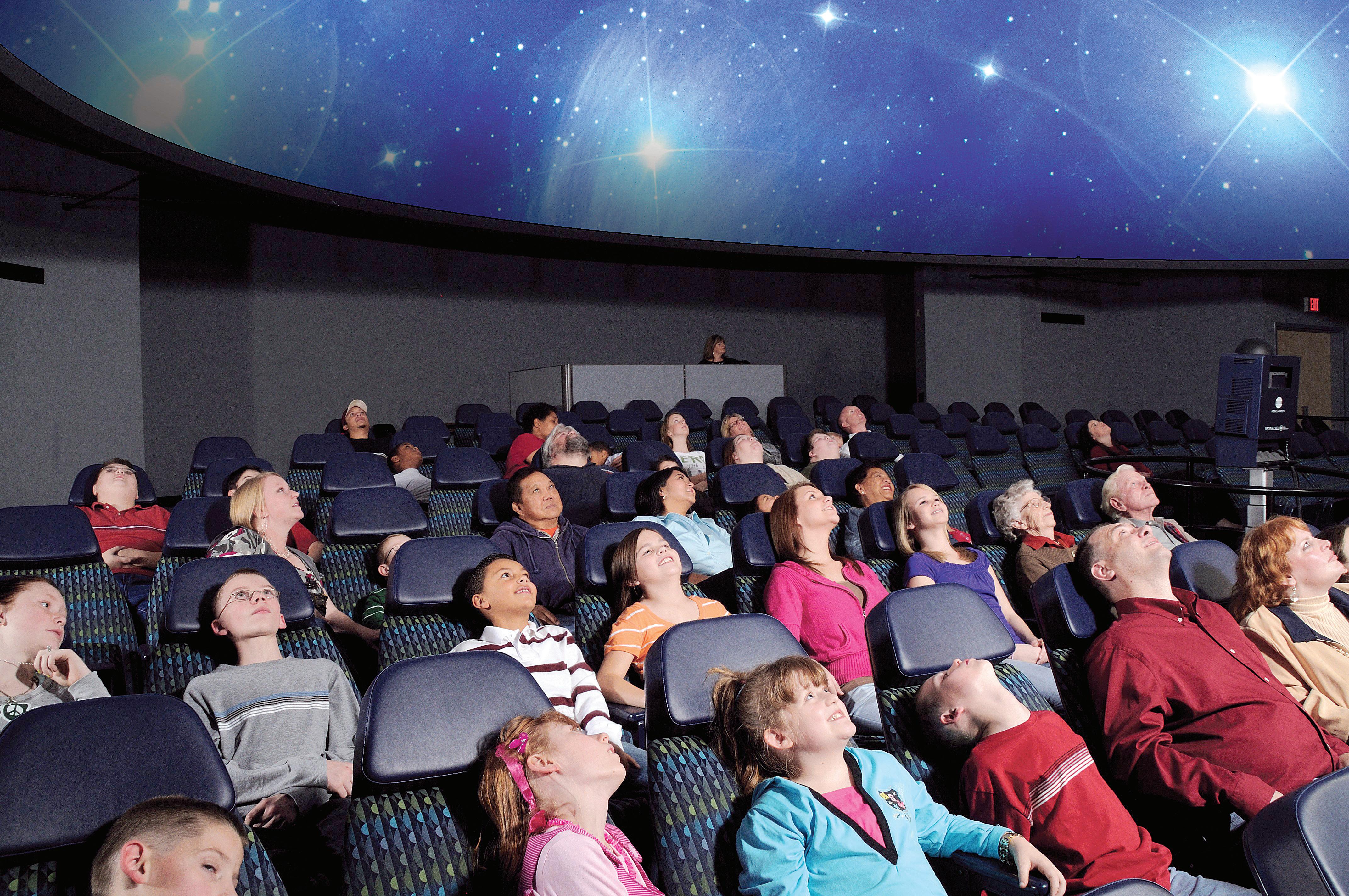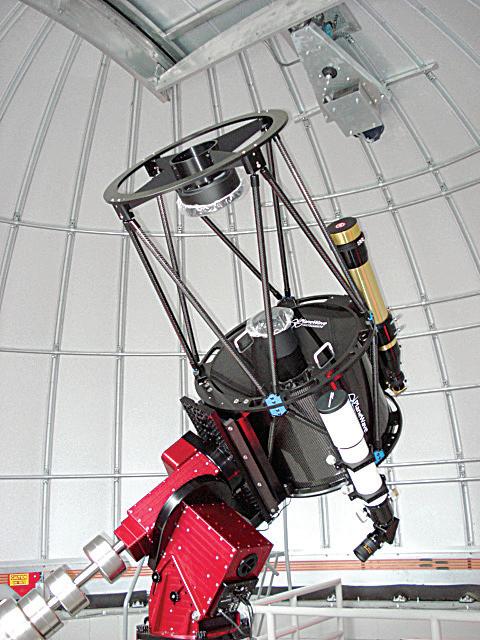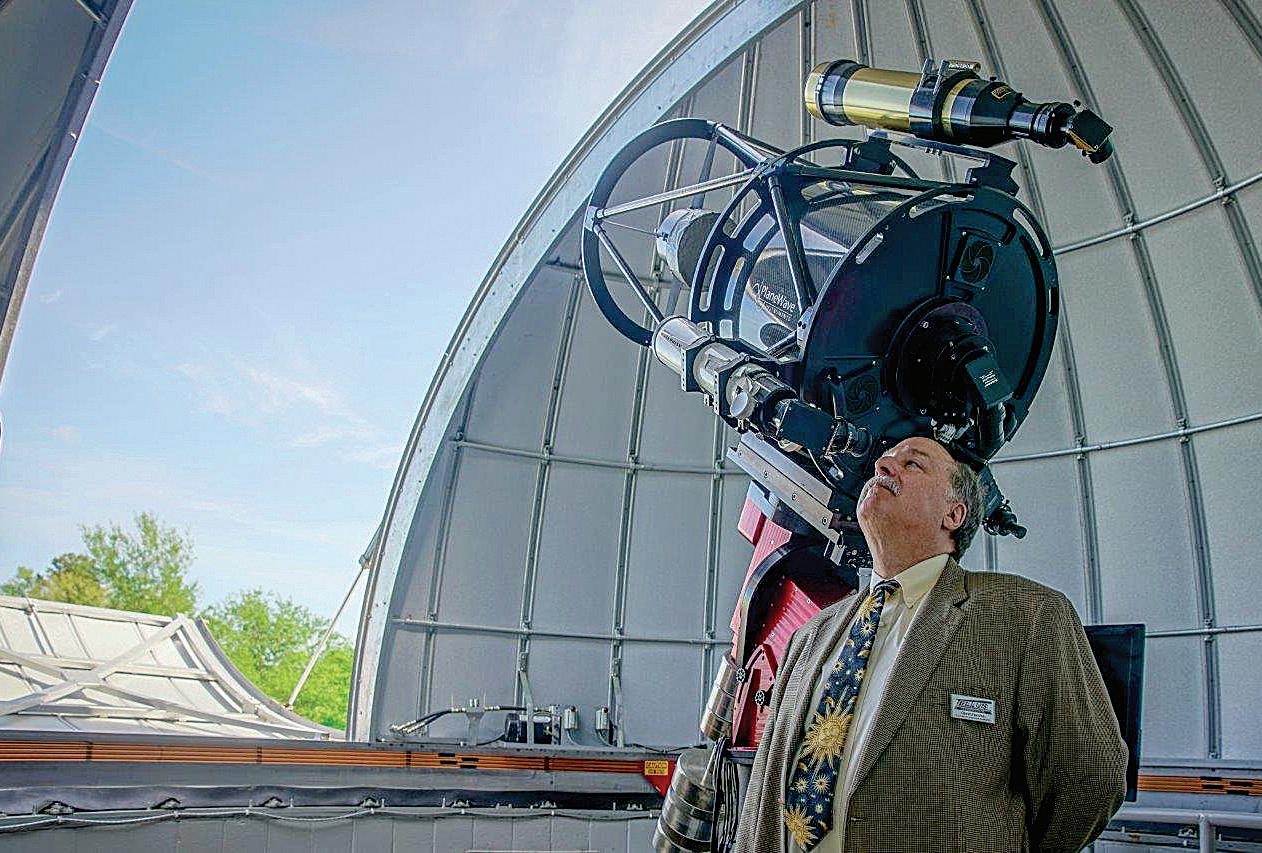
3 minute read
Looking up! Seeing the beauty of the night sky
By Mark Woolsey
Say the idea of looking at the mountains, craters and shadows of the moon gets your interest. Perhaps a distant and colorful nebula inspires awe and wonder. Or maybe the prospect of checking out Saturn and its rings-hanging like a jewel in space-gives you goosebumps.
You just might be a future amateur astronomer. Several observatories in Georgia, most of them associated with academic institutions, offer observation and research opportunities for students and others seeking astronomical knowledge/ degrees and almost all throw open the doors to the public during non-pandemic times. But what’s more, a healthy number of amateurs-seniors well-represented among them-are increasingly taking astronomy up as a hobby, sometimes spending thousands of dollars on gear. The goastronomy. com and Middle Georgia Astronomical Society websites together list nearly a dozen sky-scanning clubs in the state
Experts caution that budding cosmologists will need a healthy dollop of patience-and advance planning as well. But the rewards for being deliberate are spectacular.
“The most common reaction is ‘wow,’” said David Dundee, a genial 60-ish astronomer who presides over the 20-inch telescope and observatory at the Tellus Science Museum in Cartersville (along with its associated planetarium). The observatory has opened with social distancing and safety measures during the pandemic, unlike most others. Their
120-seat planetarium also is open on a limited basis for sky shows.
“The most important thing is the ability of a person to come here and put their eye to the telescope and say ‘I can see the rings of Saturn or ‘I am looking up at the Orion nebula,’ “ Dundee said. “To me that’s so much better than being at home (at a computer) and punching buttons and up come pictures.”
He said the most popular viewing targets are the moon, Mars and Saturn, as well as Orion and other nebulae (which are giant gas and dust clouds far away in space). The Andromeda galaxy, star clusters and lunar and solar eclipses also find favor.
“You can call them the greatest hits of space,” he said with a grin.
Tellus volunteer, amateur astronomer and retired chemist Bob Gossman said his interest in the heavens flickered to life while viewing astronaut Ed White’s groundbreaking Gemini 4 spacewalk in 1965. “I excitedly woke my parents and they told me to go back to bed,” he recalled and told of a similar, much more recent epiphany.
During a public program one night he coaxed a frazzled mother riding herd on her kids into taking a look through the eyepiece. Saturn and its rings held center stage.
When she looked herself, she was so surprised by what she saw that she yelled an obscenity, Dundee recalled. Then she was embarrassed because she had blurted the words in front of her kids. “I asked her to describe what she was seeing,” he said, “and her voice began cracking. She was tearing up.”
The modest masonry, brick and steel-girder observatory at Tellus has a 20-inch telescope that looks a bit like a planetary probe. More compact and lighter than its predecessors, two people can lug it into place and perch it on its mount.
Once the telescope is in position and darkness falls, families of all sizes and shapes – including a healthy contingent of seniors – make their way to the campus. Before the COVID-19 pandemic,
Dundee said, the domed building about 10,000 visitors a year. This year is different, he said, because the observatory was shut down for weeks.
What’s more, he said, “this is a big date night location.”
Recently a group of teenagers celebrating a birthday showed up. During public nights, smaller telescopes set up near the observatory and volunteers with laser pointers spotlight highlights of the heavens.
The Tellus telescope is a 20inch reflector utilizing mirrors. Refracting telescopes, by contrast, use lenses. Each has advantages and disadvantages, said Gossman. A refracting telescope is typically cheaper and a bit brighter, while a reflecting device can gather more light with a more compact design.

Dundee said novices might think magnification is most crucial, “but the name of the game in astronomy is aperture. The bigger the telescope, the more light it can gather up and the fainter the objects you can see.”
Those who are newly interested in the moon, planets and stars can start out in a more uncomplicated way.
“Astronomy is like most hobbies,” said Dr. Greg Feiden, assistant astronomy professor at the University of North Georgia and the director of their observatory, which recently was rebuilt and which uses 24-inch and 28-inch telescopes. “You can spend as much or as little as you want on equipment. It can be completely free as you walk out and take a look at the night sky.”
An inexpensive star chart can make sense of the constellations. For somewhat more, a pair of sturdy binoculars costing less than $100 can bring the brighter celestial objects into view, astronomers said.
Feiden guestimates that about 20 percent of the observatory’s visitors during normal times (it’s closed to the public now) are seniors. He thinks that proportion may increase with their new facility, which includes a lift to take visitors up to the observation continued on page 6 continued from page 5 deck and a periscope that can bring an eyepiece down as low as the 3-foot level.

For those doing their own viewing, patience pays off, Gossman stressed. He advises taking time to let your eyes adjust and utilizing peripheral vision to spot additional objects like planetary moons.
He advises people with home gear to adjust their “finderscopes,” an aiming device, and align them with the main telescopes during the day. After dark, he noted, getting one’s celestial bearings can










